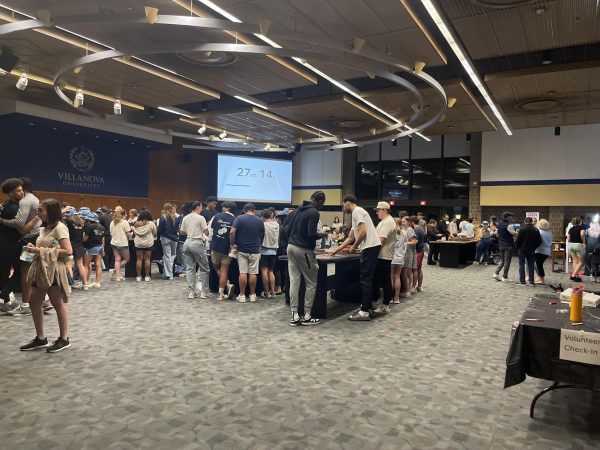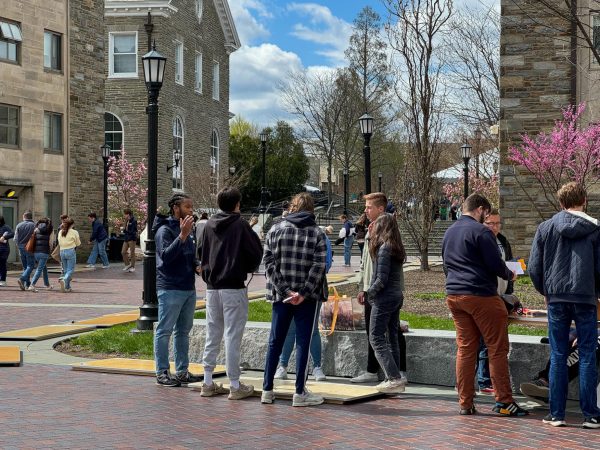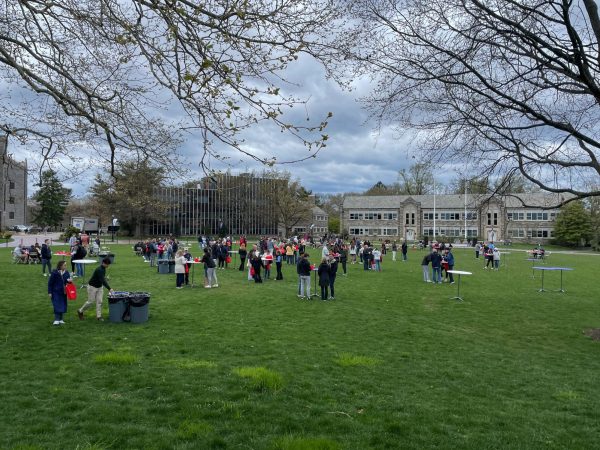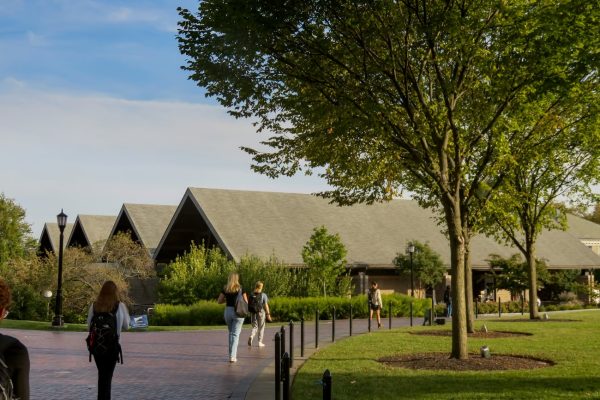Students Earn Cancer Research Fellowship
November 7, 2018
In Summer 2018, University Biology students Isabella (Bella) Burda ’19 CLAS and Alexandra (Allie) Quatrella ’19 CLAS both earned a Villanova Undergraduate Research Fellowship to study a gene, Brd2, under Angela DiBenedetto, PhD, an associate professor of Biology. In the Mendel labs, the two students worked closely with zebrafish, vibrant model organisms for studies of vertebrate development and gene function. They are using these fish to examine specific genetic factors that can contribute to the risk of developing diseases like different types of cancer.
Certain regions of chromosomes in the human genome contain DNA sequences, or genes, that are crucial for normal cellular development and function. Mutations, such as duplications or deletions of certain pieces of the gene, increase risk of disease. The gene, Brd2, is a key regulator. In other words, it controls the expression of many other “target” genes involved in both cell division and cell death. It is also known as a protooncogene—a normal gene, when altered by mutation, becomes an oncogene that can force cells into uncontrollable mitosis, or cell replication, thus leading to cancer. It is also a factor in neural development and its deregulation may lead to juvenile myoclonic epilepsy.
DiBenedetto has long researched the role Brd2 plays in the fundamental regulatory processes of cell death, differentiation and division that lead to normal development of the vertebrate embryo. In her lab, these tropical zebrafish are used as a model to determine how mutations in the Brd2 gene may lead to developmental abnormalities and disease in humans.
At first, one may question why zebrafish are used as model organisms. “On the surface, humans appear to be completely different from zebrafish, but we are actually far more similar to them that you might think,” Quatrella said.
Approximately 70 percent of human genes are found in zebrafish, which are also vertebrates. They have two eyes, a mouth, a brain, a spinal cord, and other physiological attributes in common with humans. Therefore, any type of disease that impacts these shared body parts in people can theoretically be modeled using zebrafish.
Earning the VUFR fellowship has allowed both students to make substantial progress in the lab and in the field of biology. For Burda, a Villanova student-athlete juggling academics and Division I time commitments, the VUFR fellowship has allowed her to dedicate significant hours in Dr. Benedetto’s lab for the first time. She has been able to make considerable progress towards her senior thesis, which focuses on the mechanisms of Brd2 action and its control of cell death in both zebrafish and humans. After graduation, she intends to pursue a career in molecular biology and genetics research.
“Dr. DiBenedetto has given me so much of her time to help me become accustomed to the workings of the lab and everything I need to know to pursue my research,” Burda said. “She’s so accessible.”
Since her sophomore year, Quatrella has worked alongside Dr. DiBenedetto in the lab. She also attended and presented at the Society for Developmental Biology Annual Meeting with Dr. DiBenedetto this past summer. In her senior thesis, Quatrella hopes to focus on the role Brd2 overexpression plays in blood cancers, especially leukemia. She aspires to attend medical school and ultimately work as an Army physician. Her VURF fellowship was funded by the College of Liberal Arts and Sciences’ Dean Fund for Strategic Initiatives.
“Students like Bella and Allie are one of the reasons why I love what I do. Watching them achieve progressively higher levels of understanding involving experimentation, and synthesis and communication of scientific ideas, is amazing,” DiBenedetto said. “As members of the lab group, they are also defending their thinking and conclusions, giving one another constructive feedback, all the while considering the impact of science and technology on society.”












